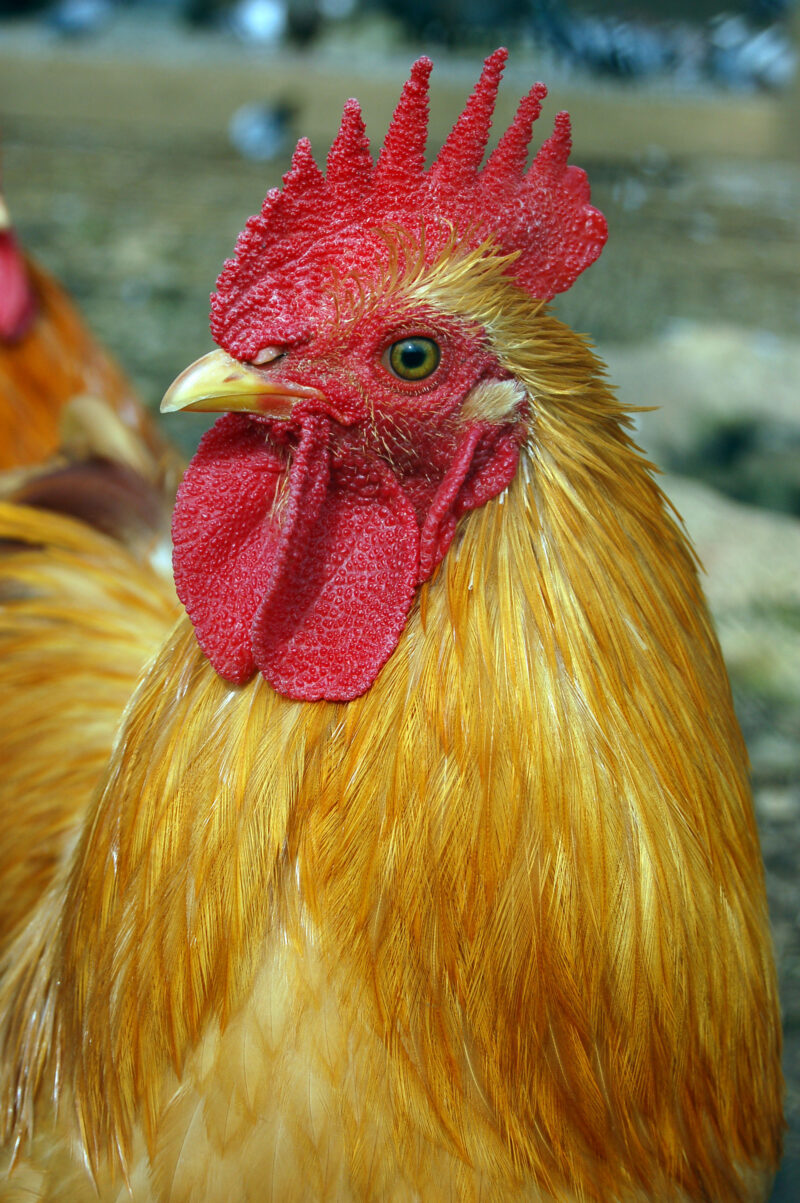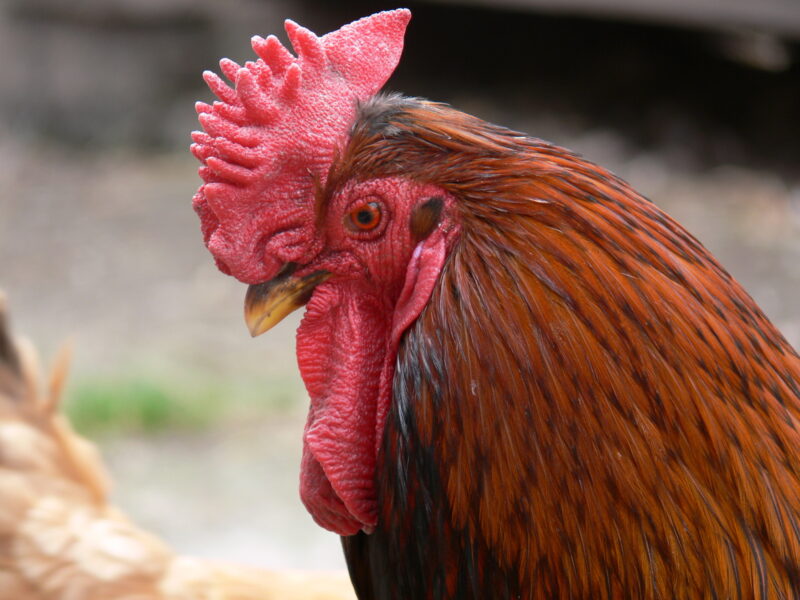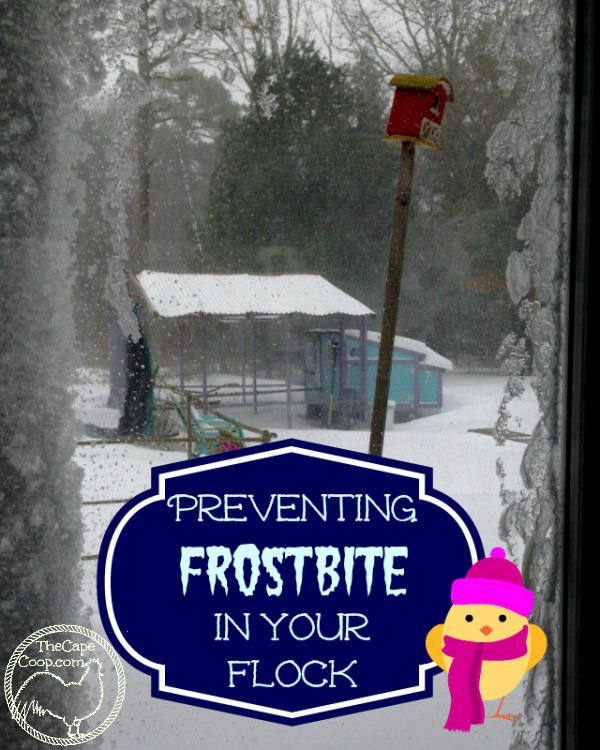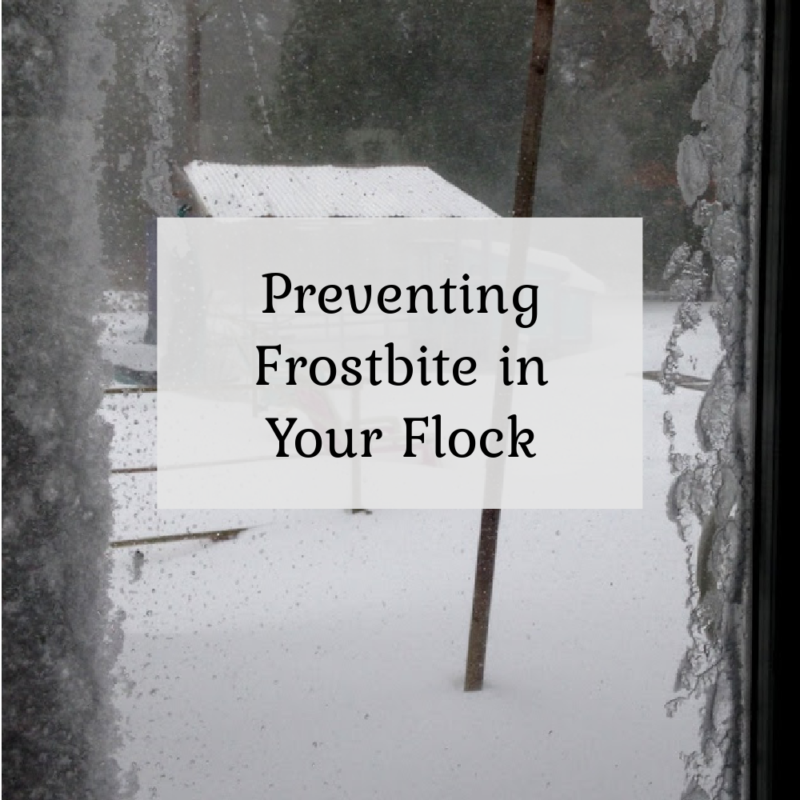---------------------------------------------------------
The winter chill has settled over New England. This is the season where I worry about my flock the most. In my head I know they are fine out there in their God given cozy feather down coats, but in my heart I want to give them some fuzzy blankets and scarves!
Most standard size chicken breeds are very cold hardy. They actually do much better in the winter than in the summer heat. They roost together for warmth and have been managing just fine for millennia without much fussing from humans. We can’t keep them safe from the cold, but we can take steps to keep them safe from frostbite.
Frostbite can be painful and can cause disfigurement. Unfortunately, most cold climate chicken owners will deal with frostbite at one time or another. The good news is with a little preparation, severe frostbite can be avoided and the chickens kept as comfortable as possible.
Who is at risk for frostbite?
Frostbite occurs when the fluid in your cells freezes. The freezing causes tissue damage in mild cases and tissue death in severe cases. In very cold weather, frostbite can occur in minutes.
Most of your chicken’s body is covered in warm, fluffy down feathers, leaving their feet, legs, wattles & combs exposed. In humans, frostbite occurs to exposed skin – most often fingers, nose, ears, etc. The same goes for your chickens. Frostbite in chickens is most likely to occur in their wattles & combs. It is sometimes seen in their legs or feet, but often when the temperatures are coldest at night, the chickens have their legs hidden warmly under their body. Obviously, the more skin you have exposed, the higher your risk of frostbite, so chickens with large combs & wattles are at the most risk.

Moisture is frostbite’s best friend
Have you heard the summer saying “it’s not the heat, it’s the humidity”? When it’s humid, our body’s natural cooling system (sweating) doesn’t work as well because the air is too moist to evaporate our sweat, making us feel hotter than a “dry” heat. So a dry day at 90 degrees will always feel cooler than a humid day at 90 degrees even though the air temperature is the same.
A similar principle is at work in the winter. With a “dry” cold, any moisture will evaporate into the air. On a damp, cold day, the moisture will settle on your skin, clothes (or feathers) and can’t be reabsorbed into the air. Your body then has to work extra hard to heat not only your body but the layer of water covering you, effectively lowering your core temperature. So a dry day at 20 degrees will always feel warmer than a damp day at 20 degrees.
How to limit frostbite in your flock
The first way to limit frostbite is to choose cold hardy breeds of chickens if you live in a cold climate. (Check out my post on choosing winter hardy breeds here). Chickens with large, single combs will be more at risk than chickens with pea combs. Chickens that have huge wattles that hang down their neck will be more at risk than a bearded chicken with small wattles. Roosters in general will be at higher risk than hens with their larger combs & wattles. Does this mean if you live where it’s cold you can’t have fancy chickens? Of course not! You just need to take a few extra precautions.

Design your coop with lots of ventilation
I know it seem counterproductive in the winter to leave vents or windows open but your chicken’s life depends on it!
Chickens produce an amazing amount of moisture. They expel it as they breath. Chickens do not urinate, so all their urine is contained in their droppings. The droppings in the coop in turn give off a lot of moisture and can soak bedding making a soggy mess if left unturned. You most likely are keeping a large container of drinking water in the coop full of water that can evaporate into the air. There is moisture everywhere in that coop!
You should plan for plenty of ventilation near the top of your coop where the warm, moist air will rise and can escape. You want to position the vents away from roosts so they aren’t sleeping with drafts and cold air blowing on them. If possible design your vents with flip down covers so rain & snow won’t blow in on them. A handy item to have in your coop is a humidity gauge. Aim to keep humidity between 40%-70% year round.

Keep that coop clean!
Removing wet, soiled litter and droppings will really keep the humidity levels down. If you use poop boards under the roosts, clean them daily. If you are using the deep litter method in your coop, make sure you are managing it properly by turning the soiled litter and adding in fresh litter often.
Rethink your water system
If you have chickens that have long wattles you don’t want them dipping down into the water font, getting their wattles all wet. Consider getting a nipple water system or raising up your water font. You might want to move the waterer outside of the coop to eliminate a source of moisture. At the very least, make sure your water font is stable and won’t be knocked over by the birds, soaking the coop.
Provide wide, flat roosts
Giving the flock wide roosts lets them completely cover their feet at night, keeping them warm & safe.
Set up windbreaks in your run
Cover your run on the most windy sides using heavy plastic or tarps. This will keep blowing rain & snow away from your flock & coop. It will also help slightly in warming the coop air. Don’t forget to leave some parts open for air exchange!
Use Vaseline to protect tender exposed areas
There is some debate on how well this works, but most chicken owners feel better doing something rather than nothing. Smearing a layer of Vaseline on your chicken’s comb and wattle should keep moisture from settling on exposed skin. You will need to reapply this every couple of days.

My chicken has frostbite, now what?!!
First, don’t panic. Determine how bad it is. Frostbit tissue will change color, ranging from very pale pink to white to grayish to black. Color changes in your chicken’s combs should always be investigated. The skin may feel cold & hard. In severe cases, the skin will be black & painful for your chicken if you touch it.
If your chicken is listless, not interested in food or water or not moving normally it should be seen by a vet immediately. They can help you warm the chicken slowly to a normal temperature, provide pain medication and help prevent further spread or infections. If a vet is unavailable or the frostbite is not too bad you can help your chicken at home.
Bring the chicken inside and SLOWLY warm the effected areas. Do not immerse your chicken in hot water or blow direct heat (ie hairdryer) on her. Try using a hot towel or blanket held loosely against the frostbit skin. Do not rub the area, you could cause further damage and could rupture any blisters that might have formed. Give the chicken some electrolyte water to give her body the energy boost it needs to begin healing and keep the area clean.
It’s best to allow the frostbit area to heal itself. The effected areas might eventually turn black and fall off. It will not regrow but the area will heal. Don’t try to rush this process, just let it happen on it’s own schedule.
You can try GENTLY applying an antibiotic ointment a couple times a day for the first week to prevent infection. Keep a close eye on the chicken in the following weeks. Watch for signs of infection (oozing, rotten smell), watch her appetite and be sure she is drinking.
In severe cases, this might be best accomplished by keeping her in isolation away from the rest of the flock. If it is mild and she is acting normal, she can be returned to her flockmates after initial treatment. Keep a close eye on her to make sure no one is picking at the discolored area. If they are picking on her, she will need to remain in isolation until she is completely healed.








Stephanie
Thursday 12th of November 2020
Do you use heat lamps? We did at our old homestead, but since we moved our chickens are on my parents farm and there isn’t good access to outdoor power. We live in Tennessee so the coldest nights generally don’t get below the teens.
Liz
Thursday 12th of November 2020
No we never use heat lamps for our grown birds, even though we are in New England where below zero temps happen. Heat lamps and flapping wings just aren't a good combination and can be a fire risk. The other downside to heat lamps is if a storm knocks out your power, your birds are without heat and have not had a chance to acclimate to the cold. Make sure you have adequate ventilation, but not drafts blowing on them at night, and let them huddle together on the roosts. If your birds are standard, large breeds, most of them are very cold hardy!
Angela Watson
Thursday 13th of December 2018
Costco was selling a 2-pack of rechargeable de-humidifiers. They certainly help in my coop, especially since they were less than $20. When the moisture monitor changes color, just plug it in and it will dry for re-use. Great gadget!
Liz
Thursday 13th of December 2018
that is super handy! What a great idea!
Pati
Tuesday 16th of January 2018
My wonderful rooster just died tonight from what I believe started out as frostbite and then another bird pecking on him where he was bleeding so badly I spent 6 hours trying to stop it. I think he jist lost too much blood from his comb. I'm heartbroken so everyone please take this subject very seriously, your birds life depends on it
Liz
Wednesday 17th of January 2018
I am so sorry for your loss Pati! :(
Sandra
Wednesday 20th of January 2016
Great post! Thanks for sharing at Our Simple Homestead Hop! This will be my feature post this week.
Liz
Thursday 21st of January 2016
Wow! Thanks! :)